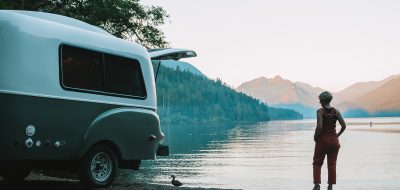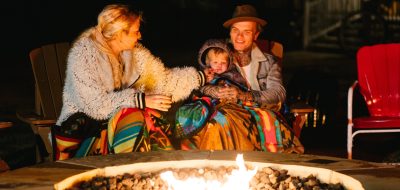Our camper is very important to us—both as a vehicle as well as for what it represents. Our camper means recreation, the freedom of the open road, good times with our kids, not sleeping in a tent, vacation, relaxation. The list goes on…
That is why we take care of it. We clean it up every year when we take it out for the first time. We clean it before every trip. We sweep our travel dirt out of it when we return home. And, before we put it away for the winter, we wash floors, take out everything that could freeze and explode over winter, empty water out of the tanks and lines and put antifreeze in them to protect it in the cold Rocky Mountain winter weather.
When something goes wrong with our camper, we are quick to take it in to the repairman. We want to avoid having our next trip delayed by a malfunction, or worse yet, to experience a malfunction on the road. When we moved to New Mexico, one of the first professionals we looked up was someone to take care of our camper and the Dodge Durango that pulls it. It is a priority.
We also insure it. We pay an extra $50 every six months on our auto insurance policy to cover our camper. And we pay $50 a year to have it licensed so it is able to travel without incident.
But one of the things we had struggled with ever since we purchased our camper five years ago was how to cover it to protect it from the weather. When we lived in Wisconsin, we had no room at our home to keep it. We had a two car garage, the doors of which were too low to accommodate our camper. Further, if we parked the camper in our driveway, neither of our cars could access the garage. Therefore, our only option was to keep it somewhere else until just before we were leaving on a trip and, the morning we were leaving, to transfer cars so that they could be left in the garage and driveway while we were gone.
Our “somewhere else” in Wisconsin was seven acres we owned in northern Wisconsin where the camper lived until just before our trips. But we had no structure to cover it on that property. In Wisconsin, the damaging weather came largely in the winter. We would cover our camper with a large tarp, lashed and tied down so it would stay put and provide protection, even in the event of higher winds.
As many of you know, last year we moved from Wisconsin to northern New Mexico. We could have left our camper in Wisconsin, but wanted it near us so we could embark on adventures to explore the western half of our country. Alas, in New Mexico we did not even have a garage for our cars. However, we heard from several camper-owning neighbors that their travel vehicles were seriously damaged by the harsh, hot sun at our elevation of 7000 feet in the Rocky Mountains. One of them had even had to have major repair work done due to the extreme sun damage to her camper, which she had named Lucy.
 While we were initially not too concerned about not having a garage in New Mexico, upon hearing this, we made plans to have a carport constructed on our property, the main purpose of which was to protect our camper. We saved our money, made contact with a nice young man who had built a terrific carport for Lucy’s owner and hired him to build our carport. It took nearly a year to pull off, but in April of this year, our carport was constructed so that now our camper is protected from the sun’s harsh rays.
While we were initially not too concerned about not having a garage in New Mexico, upon hearing this, we made plans to have a carport constructed on our property, the main purpose of which was to protect our camper. We saved our money, made contact with a nice young man who had built a terrific carport for Lucy’s owner and hired him to build our carport. It took nearly a year to pull off, but in April of this year, our carport was constructed so that now our camper is protected from the sun’s harsh rays.
It is not yet complete. We hired the carport structure built. We want eventually to put latilla (slender 8 foot aspen poles) around the outside to provide additional protection as our neighbor had done and Terry is also in the process of adding a shed onto the back of the carport for additional storage. However, the time of year we built was a time of year during which people were prevented from cutting latilla from the national forest so the price was $3 apiece. When you will need about 300 latilla to complete a project, paying $3 each, as opposed to a late summer price of $1.75, makes a big difference. This winter, our camper will have side protection as well. But for this summer, it is more important to not break the bank as long as it has protection from the sun’s harsh rays. With over 300 days of sunshine per year, this will make a big difference.
I am relieved. Our recreation is preserved! Life is good!
Learn more about camping and read more camping articles.







